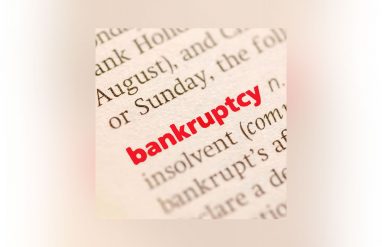Doomsday is one of those evocative words that paint a very vivid picture. We define doomsday: “the day of the Last Judgment, at the end of the world; nuclear destruction of the world; given to or marked by forebodings or predictions of impending calamity; especially concerned with or predicting future universal destruction.” As you can see, it’s about as bottom-line as it can get. Other words associated with doomsday are just as expressive, like Armageddon and apocalypse.
With that said, the “Doomsday Clock” has (unfortunately) been in the news of late. Its hands have been moved up to just 90 seconds to midnight, which metaphorically means that the planet is about as close to global disaster as it ever has been. (Midnight = we’re in serious trouble.) The very fact that such a thing has existed for so long means that mankind has teetered on the precipice of disaster for quite awhile now. So, what exactly is this thing, and how did it gain this status as a symbol of our collective impending doom?
What is the Doomsday Clock?
The Doomsday Clock (there is no physical clock, BTW) is run by a group of people who produce an academic journal called the Bulletin of the Atomic Scientists. The clock was created in 1947 just after humanity had entered the Nuclear Age after the dropping of atomic bombs on Hiroshima and Nagasaki in 1945. (That year, the bulletin was first formed by a group of scientists and engineers who participated in the Manhattan Project, which developed those weapons.) Their symbolic clock was first set at seven minutes to midnight.
Why is the Doomsday Clock set at 90 seconds?
In 2018, the clock was notably moved to two minutes to midnight for the first time in its history. 2020 marked another milestone: the clock was set at 100 seconds, just under two minutes to metaphorical doomsday.
In 2021, the Bulletin of the Atomic Scientists kept the clock at 100 seconds, and the COVID-19 pandemic was at the forefront of its considerations. According to its official statement: “Though lethal on a massive scale, this particular pandemic is not an existential threat. Its consequences are grave and will be lasting. But COVID-19 will not obliterate civilization, and we expect the disease to recede eventually.”
The 2021 statement described the pandemic as a “historic wake-up call” and decried continued modernization of nuclear technology; inadequate efforts to lessen carbon emissions and insufficient development of renewable energy sources; the alarming prevalence of widespread disinformation and infodemics; world leaders’ refusal to heed scientific advice; and a substantial lack of preparedness to handle a global pandemic.
In 2023, the clock was set to 90 seconds before midnight, which is the closest the time has ever been to midnight in the clock’s history. According to the official statement, the move was largely—but not entirely—motivated by Russia’s illegal invasion of Ukraine and threats of using nuclear weapons. According to the official statement:
Russia’s thinly veiled threats to use nuclear weapons remind the world that escalation of the conflict—by accident, intention, or miscalculation—is a terrible risk. The possibility that the conflict could spin out of anyone’s control remains high.
The statement also raised concerns about Russia’s willingness to target nuclear power facilities; Russia’s spreading of disinformation about chemical and biological weapons; the possibility that Russia’s commitment to escalation will encourage other nations to do the same; and the negative effects of Europe’s renewed reliance on natural gas will have on climate change.
Yeah, no small stuff here.
Another notable change to the time on the clock was when it advanced 30 seconds in 2017. The furthest it has been from midnight was 17 minutes back in 1991, as the Soviet Union fell apart. It’s been reset a total of 25 times (and counting) since 1947.
How often does the clock change?
The Bulletin group is not in the prognostication business where ultimate cataclysm is concerned. The academics, including many Nobel Laureates, that run the Clock don’t update it in real time. They meet twice a year to assess world events, not forecasting events but tracking data (e.g., how many nuclear weapons there are in the world, the level of carbon dioxide in the environment) and assessing the response to these threats (e.g., citizen efforts, global agreements).
But, for as doom-and-gloom as the Doomsday Clock can be, the Bulletin of the Atomic Scientists always suggests meaningful action. As they conclude in their 2023 statement:
Finding a path to serious peace negotiations [with Russia] could go a long way toward reducing the risk of escalation. In this time of unprecedented global danger, concerted action is required, and every second counts.
Additionally, they note: “There is no clear pathway for forging a just peace that discourages future aggression under the shadow of nuclear weapons. At a minimum, the United States must keep the door open to principled engagement with Moscow that reduces the dangerous increase in nuclear risk the war has fostered. One element of risk reduction could involve sustained, high-level US military-to-military contacts with Russia to reduce the likelihood of miscalculation. The US government, its NATO allies, and Ukraine have a multitude of channels for dialogue; they all should be explored.”














